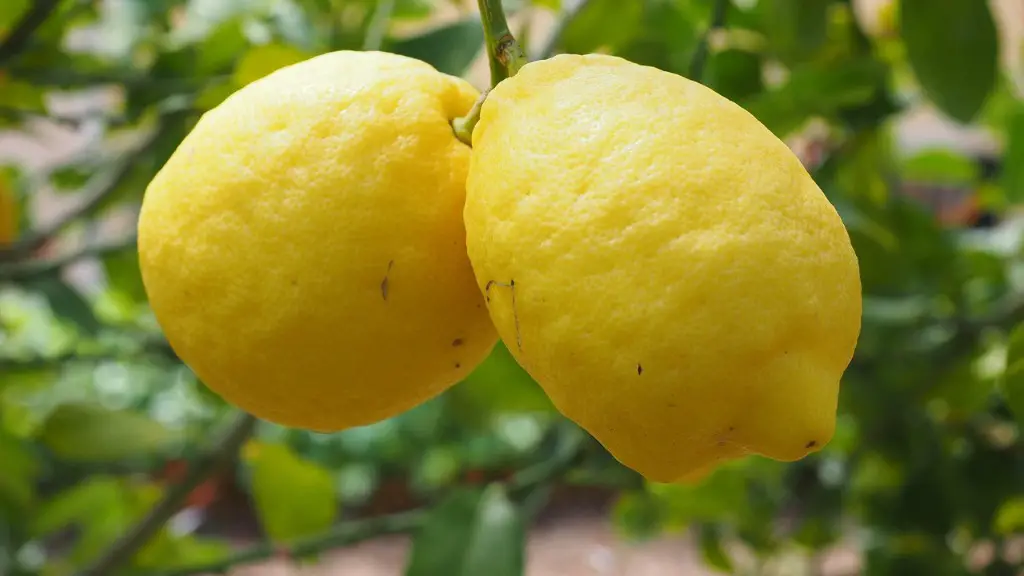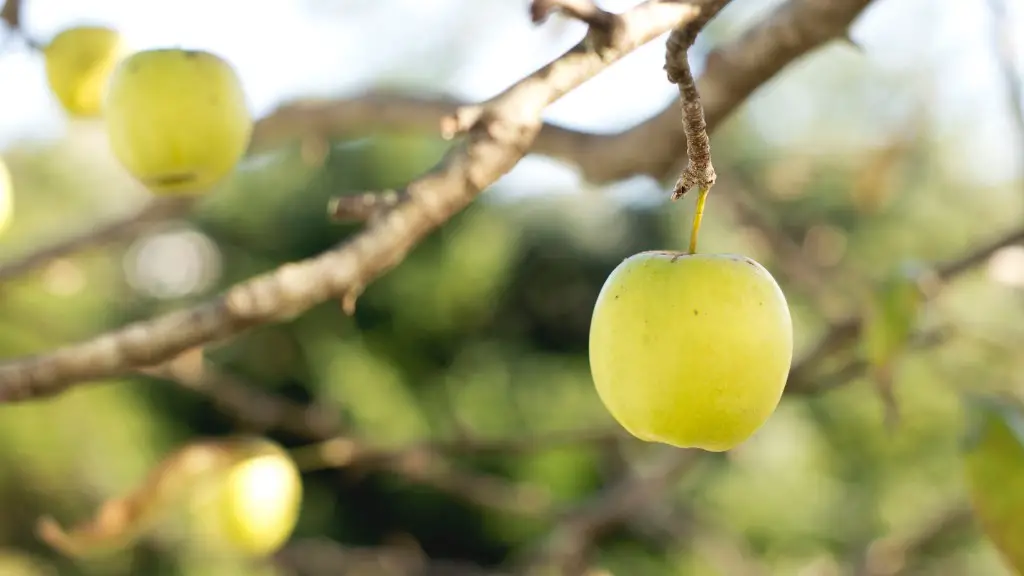The question of whether one can overwater a lemon tree is a common inquiry in gardening circles, but the answer is quite complicated. In short, yes, a lemon tree can be overwatered, however the effects can vary depending on the specific set of circumstances. Overwatering a lemon tree can lead to a myriad of problems, including root rot and fungal infestations that can often lead to tree mortality.
It is first important to note that it is not an exact science when it comes to watering lemon trees. Every climate and ground type is slightly different and these variations should always be taken into consideration when managing a lemon tree’s hydration level. The ideal amount of water for a lemon tree will change according to its environment. However, as a general rule of thumb, a lemon tree should not be watered more than three times a month during the growing season, and no more than once a month in a dry season.
When watering a lemon tree, it is also important to remember that overwatering is possible – and that it carries some serious consequences. Overwatering a lemon tree will create an environment in which the roots become saturated with water, cutting off their oxygen supply. Over time, this can lead to root rot and fungal diseases. In extreme cases, root rot can be so severe that it causes the entire tree to die.
Furthermore, over-watering can cause lemon tree leaves to yellow. Yellowing leaves indicate that the roots are not able to absorb enough water, so the plant starts to suffer from dehydration. If the water levels in the soil are sufficient, the yellow will stop, but if the tree is still overwatered, the yellowing can become more pronounced.
Lastly, it is important to note that overwatering is not the same as underwatering when it comes to lemon trees. While overwatering can be detrimental to the tree’s health, underwatering only temporarily stunts a tree’s growth. It is also important to remember that although overwatering can be a problem, it is still possible to salvage an overwatered tree. It is best to first consult a professional before attempting any restoration efforts one’s own.
Avoiding Overwatering
In order to avoid overwatering a lemon tree, one must first understand what causes the tree to become overwatered to begin with. The first, and most obvious, factor is a simple matter of too much water being poured onto the soil. Yet, there are a number of other variables that can contribute to overwatering, such as the type of soil, the size of the container, and the climate.
When attempting to avoid overwatering, it is best to water the lemon tree until the soil is around 70% moist, then refrain from watering for another few days. It is also important to note that each lemon tree is different and one must pay attention to the tree’s individual needs. Optimal water levels are dependent on the climate, soil and the size of the container, so it is important to take these conditions into account.
Tree stress is another important factor to consider when assessing a tree’s water needs. If a tree is already under stress, excessive watering may only exacerbate it. Stressful conditions that can lead to overwatering include poor drainage, a lack of sufficient drainage, and excessively rich soil.
It is important to note that over-watering and under-watering can both be diagnosed by looking at the lemon tree’s leaves. Brown and wilting leaves indicate that the tree needs more water, while yellow and sagging leaves signal that it is being overwatered.
Lastly, it is advisable to use soil moisture meters to accurately measure the amount of water in the soil. This can help prevent the lemon tree from becoming overwatered, as well as allow for the soil’s water levels to be adjusted as needed.
Identifying Overwatering Damage
If a lemon tree has been damaged by overwatering, there are a few symptoms to look out for before it is too late. The first indication of potential overwatering damage is browning and wilting of the leaves. This can be an indication that root rot has set in, and may be followed by yellow or discolored spots that can be an indication of fungal infections.
It is also important to pay attention to the size of the roots and their color. If the roots have begun to turn a brownish color, this can indicate an issue with overwatering. If the roots seem excessively small or soft, this can also indicate that the tree has been overwatered. Ultimately, if the roots of the tree appear to be unusually yellow or discolored, it is best to consult a professional for assessment.
Further issues that can arise from overwatering include stunted growth of the tree, an increased amount of soil fungus, and decreased amount of fruit production. In most cases, these issues can be addressed by adjusting the watering schedule and properly maintaining drainage. Of course, consulting a professional is always the best option to diagnose the issue and take the necessary steps to save the tree.
Restoring Overwatered Trees
Restoration of an overwatered lemon tree can be a difficult task and typically requires the expertise of a professional. Yet, there are still a few tips and tricks to begin the restoration process. If a tree becomes severely overwatered, it is important to stop watering it for a few days in order to give the soil a chance to dry out and the roots a chance to breathe.
Furthermore, it is important to consider the tree’s environment and adjust accordingly. It is usually necessary to increase air circulation around the tree, as well as move it to an area with better sunlight exposure. The soil should also be amended to maintain proper drainage and aeration. These steps can help alleviate the tree from its stress and provide the environment in which it can flourish.
Moreover, if fungal growth has begun in the soil, it is important to treat it immediately. Generally speaking, this requires applying approved chemical measures in order to prevent the spread of the fungus. Of course, it is important to follow the manufacturer’s instructions when applying it and to avoid overdosing, as too much of the chemical can further damage the tree.
It is also important to note that chemical treatments should be used in conjunction with other measures, such as improving drainage, increasing air circulation and maintaining soil aeration. When all of these measures combined, it should result in the tree being restored to its former health.
Choosing the Right Soil
Finally, it is important to select a soil for the lemon tree that will allow for optimal drainage and aeration. The ideal soil should be nutrient-rich with an adequate amount of organic matter. Soils that are amended with mulch, peat moss and sand can help with drainage and prevent overwatering. It is also important to properly maintain the soil’s pH balance and monitor its nutrient levels.
Moreover, raised beds are also beneficial for lemon trees, as they can help with drainage and prevent waterlogging. However, it is important to note that raised beds require more frequent watering, as the water tends to drain away more quickly. It is also important to remember that each tree is different and some varieties may require special considerations when it comes to soil selection.
To sum up, it is quite possible to overwater a lemon tree. This can lead to a myriad of issues such as root rot and fungal infestations. However, damage can be averted if one pays close attention to the tree’s environment and water needs. The key is to not overdo it when it comes to watering and to be mindful of the soil and tree’s individual needs. If an issue does arise, it is always best to consult a professional and take the necessary steps to restore the tree to its former health.




